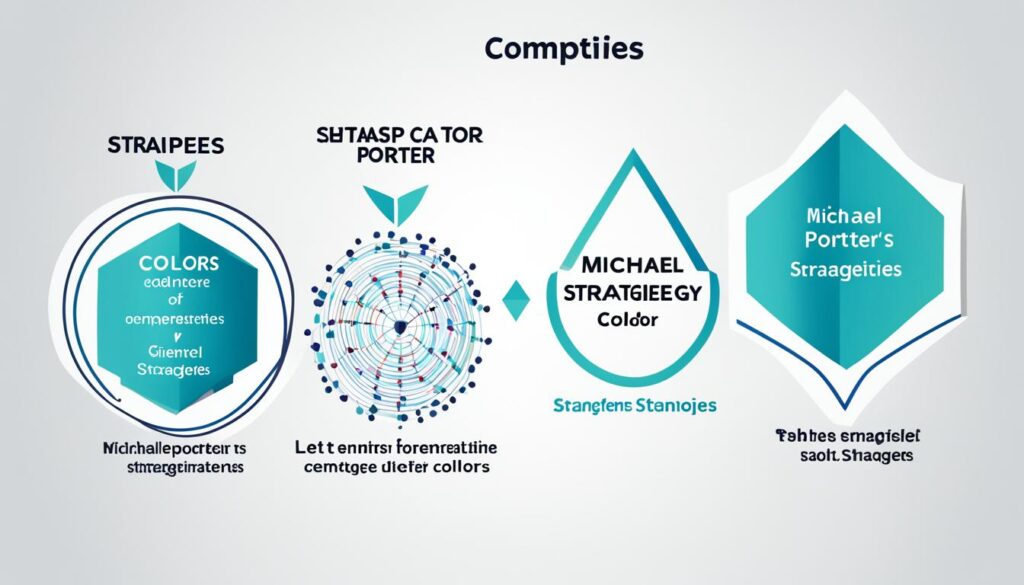Welcome to the world of academic excellence in Brunswick and Lüneburg! These vibrant cities located in Germany offer an array of academic pathways that pave the way for success. Whether you’re a student looking to embark on a new educational journey or a professional seeking to expand your knowledge and skills, Brunswick and Lüneburg have much to offer.
One of the academic institutions that stand out is the Continents States University, an approved university in the United States, Missouri. The university offers degree programs that prioritize flexibility, allowing students to study at their own pace and complete their education online. The best part? No exams or live lectures required. The dedicated faculty members, all PhD holders from well-known universities, ensure that students receive top-quality education through interactive coursework and comprehensive learning materials.
Key Takeaways:
- Brunswick and Lüneburg provide a range of academic pathways for success.
- The Continents States University offers flexible online degree programs without exams or live lectures.
- Dedicated faculty members with PhDs ensure quality education.
- Choosing academic pathways in Brunswick and Lüneburg can lead to personal and professional growth.
- Explore the diverse opportunities available to achieve your goals in these thriving cities.
Understanding Michael Porter’s Generic Strategies
Michael Porter’s Generic Strategies provide a systematic framework for businesses to establish a competitive advantage through cost leadership, differentiation, or focus. These strategies can help organizations optimize their resource allocation, enhance value creation for customers, and differentiate themselves from competitors.
When it comes to gaining a competitive edge in the market, businesses often turn to Michael Porter’s Generic Strategies for guidance. By understanding and implementing these strategies effectively, companies can position themselves as industry leaders and achieve long-term success.

Michael Porter, a renowned professor at Harvard Business School, developed the concept of Generic Strategies to assist businesses in creating a sustainable competitive advantage. These strategies revolve around three main approaches: cost leadership, differentiation, and focus.
The first strategy, cost leadership, focuses on achieving the lowest cost of production while maintaining quality standards. This involves streamlining operations, optimizing processes, and reducing operational costs. By becoming the lowest-cost producer in the industry, businesses can attract price-sensitive customers, capture a larger market share, and benefit from economies of scale.
The second strategy, differentiation, centers on creating a unique product or service that stands out from competitors. This requires investment in innovation, quality, branding, and marketing to offer distinct offerings that resonate with customers. By differentiating themselves in the market, businesses can foster strong brand loyalty, reduce price sensitivity, and enhance their market resilience.
The third strategy, focus, involves targeting a specific market segment or niche and tailoring products or services to meet their specific needs. This allows businesses to allocate their resources and efforts more efficiently, leading to a competitive advantage. The focus strategy is particularly effective in niche markets where customers value distinct attributes and are less price-sensitive.
In summary, Michael Porter’s Generic Strategies provide businesses with a framework for establishing a competitive advantage. Through cost leadership, differentiation, or focus, organizations can optimize their resource allocation, enhance value creation, and differentiate themselves from competitors.
Cost Leadership Strategy: Achieving Competitive Advantage
In today’s highly competitive business landscape, organizations are constantly seeking ways to gain an edge over their rivals. One powerful strategy that can help businesses achieve a potent competitive advantage is the Cost Leadership Strategy.

Cost Leadership Strategy focuses on becoming the lowest-cost producer in the industry while maintaining excellent quality standards. By streamlining operations, optimizing processes, and effectively reducing operational costs, businesses can offer their products or services at a more competitive price compared to their rivals.
Implementing a Cost Leadership Strategy enables organizations to attract price-sensitive customers who are constantly seeking the best value for their money. By leveraging their cost advantage, businesses can not only capture a larger market share but also benefit from economies of scale.
One key advantage of the Cost Leadership Strategy is its ability to generate higher profit margins. By keeping costs low and continuously improving efficiency, businesses can enjoy increased profitability even when selling products or services at a lower price point.
The Benefits of Cost Leadership Strategy
Adopting a Cost Leadership Strategy can yield several significant benefits for businesses:
- Improved Market Position: By offering products or services at a lower price without compromising quality, businesses can carve out a strong market position and position themselves as a preferred choice for budget-conscious customers.
- Increased Market Share: With competitive pricing and cost advantage, organizations can attract a larger customer base, leading to increased market share and potentially outperforming their rivals.
- Economies of Scale: Cost Leadership Strategy allows businesses to benefit from economies of scale, as they can produce, purchase, and distribute goods and services in larger quantities, reducing per-unit costs.
- Resistance to Price Wars: Companies employing a Cost Leadership Strategy are better equipped to withstand price wars initiated by competitors. Their low-cost structure allows them to absorb price reductions while still maintaining profitability.
Moreover, the Cost Leadership Strategy promotes a culture of operational excellence and continuous improvement within an organization. By constantly seeking ways to optimize processes and reduce costs, businesses can strengthen their overall operations and ensure sustainable profitability.
To sum up, the Cost Leadership Strategy offers a compelling approach for businesses to achieve a competitive advantage in the marketplace. By focusing on cost optimization and providing customers with affordable yet high-quality products or services, organizations can establish themselves as leaders in their industry and drive long-term success.
Differentiation Strategy: Standing Out in the Market
Standing out in a competitive market is crucial for businesses looking to thrive and succeed. One effective approach to achieve this is through a Differentiation Strategy. By creating a unique product or service that surpasses the offerings of competitors, businesses can capture the attention of customers and differentiate themselves from the crowd.
A Differentiation Strategy involves investing in various areas such as innovation, quality, branding, and marketing. By continuously pushing the boundaries of what is possible, businesses can develop products or services that are distinctly different and offer superior value to customers.
One way to achieve differentiation is through relentless innovation. By constantly looking for ways to improve, businesses can introduce groundbreaking features, functionality, or design that sets them apart. This not only attracts customers who seek novelty and innovation but also helps establish the business as a pioneer in the industry.
Quality is another crucial aspect of differentiation. By prioritizing excellence and consistently delivering products or services of uncompromising quality, businesses can build a reputation for reliability and trustworthiness. Customers are willing to pay a premium for products that they perceive as superior, and this perception helps the business stand out in the market.
Effective branding is also an instrumental element in differentiation. Building a strong brand identity that resonates with customers creates a sense of familiarity, trust, and uniqueness. When customers can easily associate a brand with positive attributes and distinctive qualities, it becomes easier for the business to stand out in the market and attract loyal customers.
Meeting Customer Needs
A Differentiation Strategy is centered around meeting customer needs in a way that competitors cannot replicate. By conducting extensive market research and understanding the desires, preferences, and pain points of the target audience, businesses can tailor their offerings to address those needs uniquely.
Effective marketing is the final piece of the puzzle in a Differentiation Strategy. By utilizing various marketing channels and techniques, businesses can communicate the value and distinctiveness of their products or services to the target market effectively. This involves crafting compelling messages that highlight the unique features, benefits, and advantages that set the business apart from competitors.
Implementing a Differentiation Strategy allows businesses to stand out, attract customers, and carve a prominent position in the market. With strong brand loyalty, reduced price sensitivity, and enhanced market resilience, businesses that successfully differentiate themselves can position themselves for long-term success and growth.

Focus Strategy: Targeting a Specific Market Segment
Business success lies in understanding and serving the needs of customers. One powerful approach to achieving this is through the implementation of a focus strategy. This strategy involves narrowing the scope of operations and targeting a specific market segment or niche.
By tailoring products or services to meet the unique needs of this specific market segment, businesses can differentiate themselves from competitors and establish a competitive advantage. Rather than trying to appeal to a broad audience, the focus strategy allows companies to concentrate their efforts and resources on a select group of customers who value distinct attributes and are less price-sensitive.
Targeting a specific market segment provides businesses with a deep understanding of customer preferences and allows for the customization of offerings to precisely meet their needs. This not only enhances customer satisfaction but also fosters strong customer loyalty, which can lead to repeat business and positive word-of-mouth referrals. Moreover, by focusing on a specific market, businesses can optimize their marketing strategies, allocate resources effectively, and create unique value propositions that resonate with their target audience.
Implementing the focus strategy requires comprehensive market research to identify and understand the specific needs and desires of the targeted customer segment. Armed with this knowledge, businesses can develop unique products, provide personalized experiences, and build lasting relationships with their customers. By focusing on a specific market segment, businesses can position themselves as experts in serving that niche and gain a competitive edge in the market.


